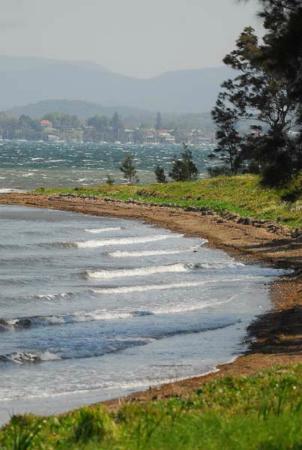The immediate concern of the local council was to reduce the sediments being transported into the lake from the creeks and streams and the erosion occurring on the sides of the lake.
Revegetation was part of the solution to try and stop erosion from happening in the first place, but the most effective step appears to have been the construction of artificial wetlands. These work for a number of reasons.
- They slow the flow of water down reducing its potential to cause erosion.
- Slowing the water down also allows sediments to fall out before they reach the lake
- Plants in the wetlands also absorb nutrients and thus improve the quality if the water entering the lake.

Artificial wetlands also protect the lake oven when overflowing in heavy rain by reducing sediment flow into the main waterway. Even though their capacity to remove nutrients and pollutants is greatly reduced, they continue to slow water down so that it is not able to carry as much sediment into the lake.

No comments:
Post a Comment